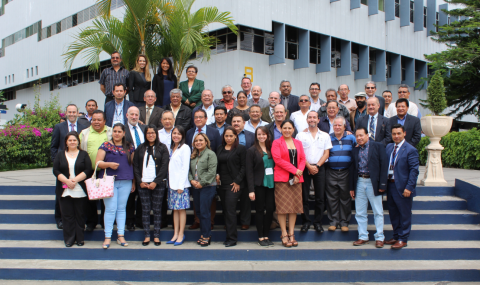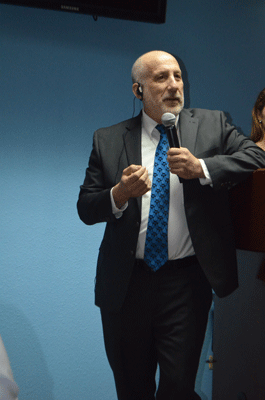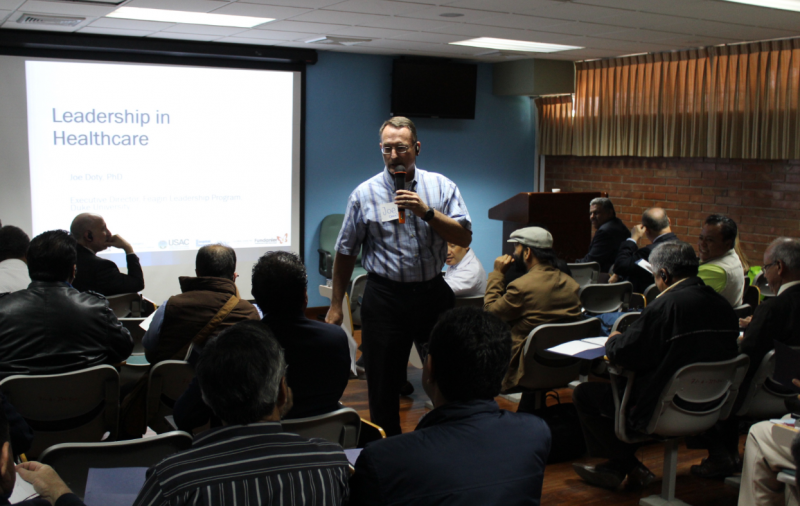
This past October, faculty from the Surgery and Anesthesiology departments collaborated with the Guatemala Ministry of Health to organize the Executive Leadership and Patient Safety Symposium.

Henry E. Rice, MD, Professor and Chief, Division of Pediatric Surgery, has been involved in improving patient safety initiatives at Duke for the past seven years, and this symposium was the result of a long collaboration with Guatemala. “The global health agenda is moving beyond providing access to and increasing capacity for healthcare and into a focus on the quality of care received,” explained Dr. Rice. Duke Surgery faculty members have worked on transforming lessons from Duke’s patient safety and quality infrastructure and Duke Surgery’s quality practices into practical application at the national level in Guatemala.
The Ministry of Health in Guatemala declared patient safety to be a national priority in 2017, and developed a strategic five-year initiative with the advisement of the Duke experts. This symposium, a first of its kind, helped to both identify barriers to patient safety across the public health system in Guatemala, as well as to prioritize intervention strategies that were uniquely suited to the cultural and financial environment of the Guatemala National Healthcare System. A total of 36 hospital directors and 13 participating experts attended the symposium, hailing from 20 out of the 22 departments—the equivalent of states here in the US—that make up Guatemala. This high attendance was even despite a then on-going suspension of medical services, protests against unfair wages, poor working conditions, and job instability for healthcare workers.

Brad M. Taicher, DO, MBA, Pediatric Anesthesiologist, attended the event as a quality expert and said that the symposium was a success beyond all expectations. Dr. Taicher believes the symposium will lay the groundwork for future collaborations. “I believe this project embodies how a well-functioning multidisciplinary partnership is necessary to succeed with an endeavor like this on an international level.” Other experts who spoke at the symposium included Joe Doty, PhD, Director of the Feagin Leadership Program, and Sindy Mendez Soveranis, MD, Pediatric Nephrologist at Roosevelt Hospital in Guatemala. Dr. Mendez was one of the first participants in the Patient Safety Fellowship program at Duke in 2017, an intensive two-week program. Dr. Mendez returned to Roosevelt, where she took a leading role in implementing the tools and practices that she learned to improve pediatric care.
Also instrumental in making this happen were Bria Johnston, Duke Clinical Research Coordinator, Isabelle Sico, Duke Global Health Institute graduate student, and Judy Milne, MSN, RN, CPHQ, CPPS, Director of Patient Safety at Duke University Hospital. Johnston was quick to applaud the efforts of the collaborators in Guatemala, without whom the symposium would not have been possible.
“The Guatemalan leaders, directors, doctors, and teams are working incredibly hard to build a patient safety framework in their healthcare system and improve the quality of care for their patients. They are at the forefront of this work in Central America, and we (at Duke) just get the privilege of helping them along in this process.”
This echoes how Dr. Rice sees Duke Health’s role in future patient safety initiatives across the globe. “We are helping local experts to make these changes,” says Dr. Rice. “Our long-term aspirations are to supply metrics and tools for countries to utilize themselves, where we will be in an advisory capacity, a resource to be leveraged, not the driving force.” Other pieces in this multi-pronged strategy include aiding national governance and leadership in developing a cross-country structure to address training needs, expanding the local clinicians’ experience and skill sets, and expanding the number of safety experts and the tools that they can use to assess their progress.
Read more about this global health initiative:
